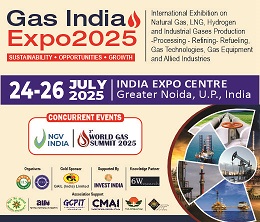United States (US) Anti Reflective Glass Market (2025-2031) Outlook | Share, Size, Trends, Growth, Analysis, Revenue, Industry, Companies, Forecast & Value
| Product Code: ETC355381 | Publication Date: Aug 2022 | Updated Date: Jul 2025 | Product Type: Market Research Report | |
| Publisher: 6Wresearch | Author: Dhaval Chaurasia | No. of Pages: 75 | No. of Figures: 35 | No. of Tables: 20 |
United States (US) Anti Reflective Glass Market Synopsis
The United States Anti-Reflective Glass Market is experiencing steady growth driven by increasing demand from various industries such as electronics, architecture, and automotive. The anti-reflective glass is widely used in display screens, solar panels, windows, and other applications to reduce glare and improve visibility. Factors such as technological advancements, growing investments in infrastructure development, and the rising trend of energy-efficient buildings are fueling the market growth. Key players in the US anti-reflective glass market are focusing on product innovation, strategic partnerships, and expansion of distribution networks to gain a competitive edge. With the increasing emphasis on sustainability and energy efficiency, the demand for anti-reflective glass in the US is expected to continue its upward trajectory in the coming years.
United States (US) Anti Reflective Glass Market Trends
In the United States, the Anti-Reflective Glass Market is witnessing a steady increase in demand due to the growing emphasis on energy efficiency and sustainability in various industries. The trend towards green building construction and the rising adoption of renewable energy sources are driving the use of anti-reflective glass in architectural applications. Additionally, advancements in technology have led to the development of innovative anti-reflective coatings that enhance the performance and durability of the glass, further fueling market growth. The increasing focus on enhancing the aesthetic appeal of buildings, reducing glare, and improving visibility is also contributing to the rising popularity of anti-reflective glass in the US market. Overall, the demand for anti-reflective glass is expected to continue to grow as industries prioritize energy efficiency and environmental sustainability.
United States (US) Anti Reflective Glass Market Challenges
The US Anti-Reflective Glass Market faces several challenges, including the high cost of production and installation of anti-reflective glass compared to traditional glass options. Additionally, the market is highly competitive, with a few key players dominating the industry, making it difficult for new entrants to establish a foothold. Consumer awareness and education about the benefits of anti-reflective glass also pose a challenge, as many potential customers may not fully understand its advantages in terms of reducing glare, improving visibility, and enhancing aesthetics. Furthermore, fluctuations in raw material prices and economic uncertainties can impact the market`s growth potential and profitability, leading to uncertainties for manufacturers and suppliers in the industry.
United States (US) Anti Reflective Glass Market Investment Opportunities
The US Anti-Reflective Glass Market presents lucrative investment opportunities due to the growing demand for energy-efficient and aesthetically appealing glass products across various industries such as electronics, automotive, and construction. With the increasing focus on sustainability and green building practices, there is a rising preference for anti-reflective glass to reduce glare, improve light transmission, and enhance overall energy efficiency in buildings. Additionally, the advancements in technology leading to the development of innovative anti-reflective coatings and materials further drive market growth. Investors can explore opportunities in manufacturing, distribution, and research and development within the US anti-reflective glass market to capitalize on the expanding applications and demand for high-quality, functional glass products.
Jordan Agar Market Government Policies
The United States government does not have specific policies targeting the anti-reflective glass market. However, general regulations and standards related to glass manufacturing, safety, and environmental impact apply to products in this market. The US Department of Energy and the Environmental Protection Agency enforce energy efficiency standards that could indirectly affect the demand for anti-reflective glass in buildings and vehicles. Additionally, trade policies and tariffs on imported glass materials may impact the competitive landscape of the market. Overall, government policies in the US focus on ensuring product quality, safety, and environmental sustainability in the glass industry, which can have implications for the anti-reflective glass market.
United States (US) Anti Reflective Glass Market Future Outlook
The future outlook for the US Anti Reflective Glass Market appears promising, driven by increasing demand for energy-efficient building solutions, advancements in the construction industry, and a growing focus on sustainable practices. The market is expected to witness steady growth as more architects, designers, and builders opt for anti-reflective glass to enhance aesthetics, improve energy efficiency, and reduce glare. Additionally, the expanding application scope of anti-reflective glass in various sectors such as automotive, electronics, and solar panels is likely to further fuel market growth. With technological innovations leading to improved product performance and durability, the US Anti Reflective Glass Market is poised for expansion in the coming years.
Key Highlights of the Report:
- United States (US) Anti Reflective Glass Market Outlook
- Market Size of United States (US) Anti Reflective Glass Market, 2024
- Forecast of United States (US) Anti Reflective Glass Market, 2031
- Historical Data and Forecast of United States (US) Anti Reflective Glass Revenues & Volume for the Period 2021 - 2031
- United States (US) Anti Reflective Glass Market Trend Evolution
- United States (US) Anti Reflective Glass Market Drivers and Challenges
- United States (US) Anti Reflective Glass Price Trends
- United States (US) Anti Reflective Glass Porter's Five Forces
- United States (US) Anti Reflective Glass Industry Life Cycle
- Historical Data and Forecast of United States (US) Anti Reflective Glass Market Revenues & Volume By Type for the Period 2021 - 2031
- Historical Data and Forecast of United States (US) Anti Reflective Glass Market Revenues & Volume By Double Layers for the Period 2021 - 2031
- Historical Data and Forecast of United States (US) Anti Reflective Glass Market Revenues & Volume By Four Layers for the Period 2021 - 2031
- Historical Data and Forecast of United States (US) Anti Reflective Glass Market Revenues & Volume By Others for the Period 2021 - 2031
- Historical Data and Forecast of United States (US) Anti Reflective Glass Market Revenues & Volume By Application for the Period 2021 - 2031
- Historical Data and Forecast of United States (US) Anti Reflective Glass Market Revenues & Volume By Architectural Windows for the Period 2021 - 2031
- Historical Data and Forecast of United States (US) Anti Reflective Glass Market Revenues & Volume By Instrumentation Windows for the Period 2021 - 2031
- Historical Data and Forecast of United States (US) Anti Reflective Glass Market Revenues & Volume By Electronic Displays for the Period 2021 - 2031
- Historical Data and Forecast of United States (US) Anti Reflective Glass Market Revenues & Volume By Picture Framing Glass for the Period 2021 - 2031
- Historical Data and Forecast of United States (US) Anti Reflective Glass Market Revenues & Volume By Showcase Glass for the Period 2021 - 2031
- Historical Data and Forecast of United States (US) Anti Reflective Glass Market Revenues & Volume By Cold Storage Displays for the Period 2021 - 2031
- Historical Data and Forecast of United States (US) Anti Reflective Glass Market Revenues & Volume By Lamps Glass for the Period 2021 - 2031
- Historical Data and Forecast of United States (US) Anti Reflective Glass Market Revenues & Volume By Others for the Period 2021 - 2031
- United States (US) Anti Reflective Glass Import Export Trade Statistics
- Market Opportunity Assessment By Type
- Market Opportunity Assessment By Application
- United States (US) Anti Reflective Glass Top Companies Market Share
- United States (US) Anti Reflective Glass Competitive Benchmarking By Technical and Operational Parameters
- United States (US) Anti Reflective Glass Company Profiles
- United States (US) Anti Reflective Glass Key Strategic Recommendations
Frequently Asked Questions About the Market Study (FAQs):
- Single User License$ 1,995
- Department License$ 2,400
- Site License$ 3,120
- Global License$ 3,795
Search
Related Reports
- Saudi Arabia Manlift Market (2025-2031) | Outlook, Size, Growth, Trends, Companies, Industry, Revenue, Value, Share, Forecast & Analysis
- Uganda Excavator, Crane, and Wheel Loaders Market (2025-2031) | Strategy, Consumer Insights, Analysis, Investment Trends, Opportunities, Growth, Size, Share, Industry, Revenue, Segments, Value, Segmentation, Supply, Forecast, Restraints, Outlook, Competition, Drivers, Trends, Demand, Pricing Analysis, Competitive, Strategic Insights, Companies, Challenges
- Rwanda Excavator, Crane, and Wheel Loaders Market (2025-2031) | Strategy, Consumer Insights, Analysis, Investment Trends, Opportunities, Growth, Size, Share, Industry, Revenue, Segments, Value, Segmentation, Supply, Forecast, Restraints, Outlook, Competition, Drivers, Trends, Demand, Pricing Analysis, Competitive, Strategic Insights, Companies, Challenges
- Kenya Excavator, Crane, and Wheel Loaders Market (2025-2031) | Strategy, Consumer Insights, Analysis, Investment Trends, Opportunities, Growth, Size, Share, Industry, Revenue, Segments, Value, Segmentation, Supply, Forecast, Restraints, Outlook, Competition, Drivers, Trends, Demand, Pricing Analysis, Competitive, Strategic Insights, Companies, Challenges
- Angola Excavator, Crane, and Wheel Loaders Market (2025-2031) | Strategy, Consumer Insights, Analysis, Investment Trends, Opportunities, Growth, Size, Share, Industry, Revenue, Segments, Value, Segmentation, Supply, Forecast, Restraints, Outlook, Competition, Drivers, Trends, Demand, Pricing Analysis, Competitive, Strategic Insights, Companies, Challenges
- Israel Intelligent Transport System Market (2025-2031) | Strategy, Consumer Insights, Analysis, Investment Trends, Opportunities, Growth, Size, Share, Industry, Revenue, Segments, Value, Segmentation, Supply, Forecast, Restraints, Outlook, Competition, Drivers, Trends, Demand, Pricing Analysis, Competitive, Strategic Insights, Companies, Challenges
- Uganda Precast and Aggregate Market (2025-2031) | Strategy, Consumer Insights, Analysis, Investment Trends, Opportunities, Growth, Size, Share, Industry, Revenue, Segments, Value, Segmentation, Supply, Forecast, Restraints, Outlook, Competition, Drivers, Trends, Demand, Pricing Analysis, Competitive, Strategic Insights, Companies, Challenges
- Australia IT Asset Disposal Market (2025-2031) | Strategy, Consumer Insights, Analysis, Investment Trends, Opportunities, Growth, Size, Share, Industry, Revenue, Segments, Value, Segmentation, Supply, Forecast, Restraints, Outlook, Competition, Drivers, Trends, Demand, Pricing Analysis, Competitive, Strategic Insights, Companies, Challenges
- UAE Building Thermal Insulation Market Outlook (2025-2031) | Revenue, Companies, Share, Trends, Growth, Size, Forecast, Industry, Analysis & Value
- Portugal Electronic Document Management Market (2025-2031) | Strategy, Consumer Insights, Analysis, Investment Trends, Opportunities, Growth, Size, Share, Industry, Revenue, Segments, Value, Segmentation, Supply, Forecast, Restraints, Outlook, Competition, Drivers, Trends, Demand, Pricing Analysis, Competitive, Strategic Insights, Companies, Challenges
Industry Events and Analyst Meet
Our Clients
Whitepaper
- Middle East & Africa Commercial Security Market Click here to view more.
- Middle East & Africa Fire Safety Systems & Equipment Market Click here to view more.
- GCC Drone Market Click here to view more.
- Middle East Lighting Fixture Market Click here to view more.
- GCC Physical & Perimeter Security Market Click here to view more.
6WResearch In News
- Doha a strategic location for EV manufacturing hub: IPA Qatar
- Demand for luxury TVs surging in the GCC, says Samsung
- Empowering Growth: The Thriving Journey of Bangladesh’s Cable Industry
- Demand for luxury TVs surging in the GCC, says Samsung
- Video call with a traditional healer? Once unthinkable, it’s now common in South Africa
- Intelligent Buildings To Smooth GCC’s Path To Net Zero













